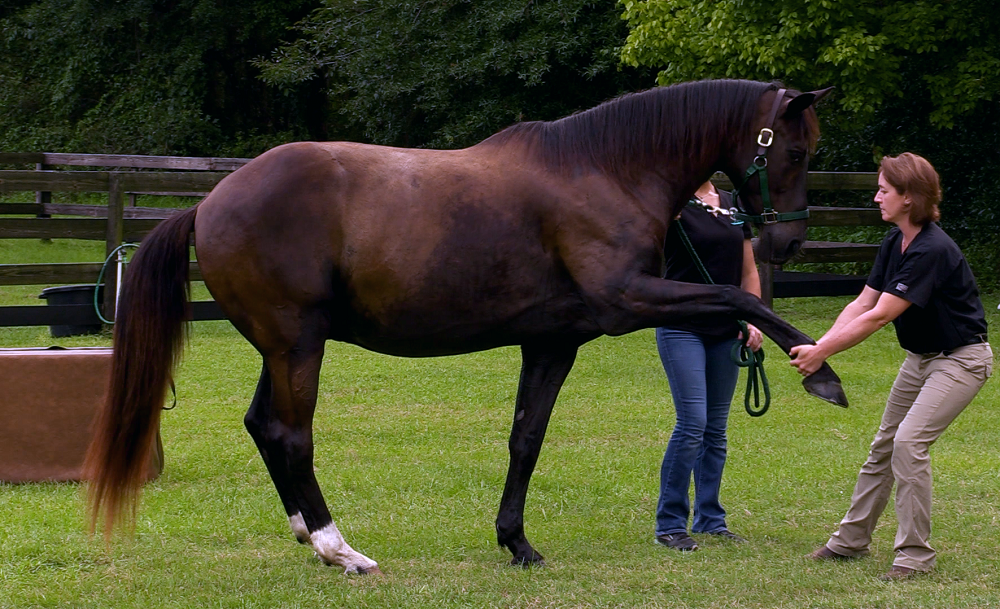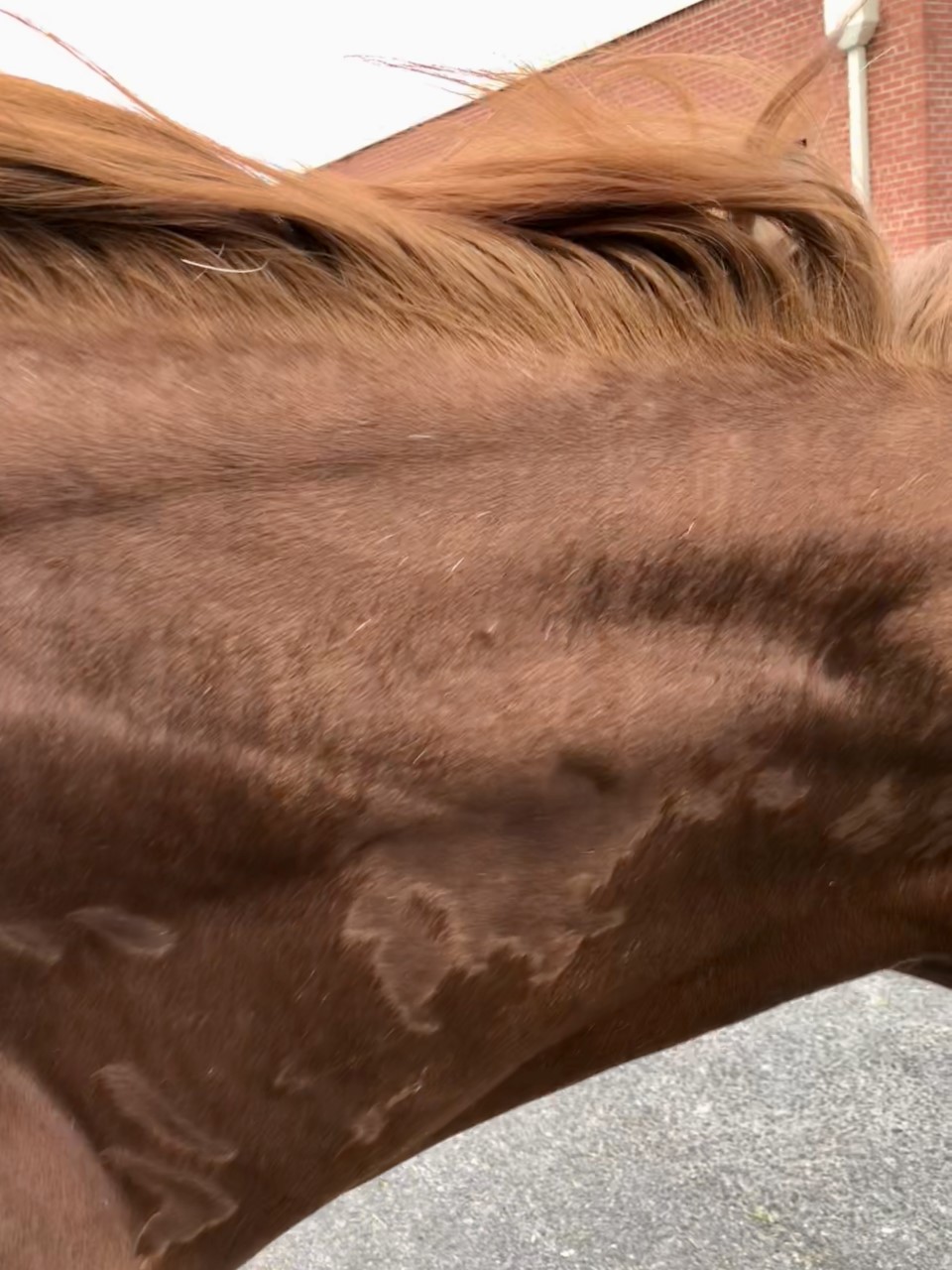Tuesdays with Tony
As the Springhill Clinic Cat (i.e. an Intellectual), my day involves sleeping, eating, and monitoring my minions, but a lot of horses have physical jobs to do. Joint problems can really get in the way of that stick jumping, barrel turning, or trail rambling stuff. When joints malfunction, the neurological balance is affected, causing pain, muscle tension and restricted joint motion. None of that is good for your horse’s ability to do his job.
My Docs are great at keeping horses healthy, and they’ve got all sorts of ways to do it. One of my Springhill Docs is always going around bending horses in weird ways….and what’s weirder is they seem to like it. What’s up with this purr-plexing treatment? Well, you’d call it chiropractic if it was being done on a human. In Europe, you might hear it called Veterinary Physiotherapy. For horses in the US, we call it Equine Medical Manipulation (EMM). Same thing, basically. Whatever you call it, the goal is to improve the mobility and function of the joints, reduce pain, and ease muscle tension.
What Happens During a Session?
Since my Doc is, well, a Doc, she’ll do a thorough exam of your horse. She’ll look at his posture and how he moves, then do a whole lot of poking and prodding to feel his joints through their range of motion. She’ll feel for muscles that are tight and check your horse’s flexibility. She can tell from all that what joints aren’t working like they should, and then she’ll perform specific adjustments to improve them.

Horses usually get more and more relaxed as it goes on, and most will show their approval during the adjustment. They may lick and chew, take deep breaths, or shake their head around after a particularly good release of tension. I think the horses should just try purring, but my Doc says they don’t know how, and the licking is just as good. Anyway, the horses look like they really like the adjustment. I tried to get the Doc to give me an adjustment by weaving around her ankles, but she doesn’t seem to get my message.
What Does it Treat?
EMM treatment doesn’t replace traditional veterinary medicine, but it gives my Doc an additional way to diagnose and treat a variety of musculoskeletal problems. Here are some things it’s useful for:
- Treating chronic musculoskeletal problems
- Treating acute problems such as tension or stiffness
- Maintaining fitness and performance, whether your horse is a sport horse or a weekend warrior
- Maintaining comfort in older horses
The number of EMM sessions your horse needs depends on the condition being treated, how long the problem has been going on, and his age. Conditions that have been going on for a long time usually require more sessions and newer conditions can require fewer sessions.

Mythbusters!
Let’s talk about some misconceptions that get my fur in a knot!
- The bones aren’t “out”. You’ve got to be kitten me! Can you see the bone sticking out of the horse? (If yes, you have a whole other problem) If not, the bone is not out. It’s still in! So, let’s stop saying things like that. My Doc will talk about “restrictions”, she won’t say things like “his hip is out”. What really happens is that reduced joint mobility causes negative effects on the joint itself, the nervous system, and the muscles and tendons surrounding the joint. These things lead to your horse having pain, abnormal posture, or poorly coordinated movement.
- They’re not cracking Cracking would actually be really bad! What my Doc does is clear the restrictions around a “motion unit”, which is the bones of the joint and the soft tissues that surround them. That means she does a manipulation to help the bones, muscles, and other stuff move the way they are supposed to. Sometimes, you hear an audible sound when air pressure in the joint is released.
- You don’t need a lot of force to adjust a horse. It shouldn’t look dramatic. In fact, good adjustments look kinda boring. Like, the horse is usually falling asleep by the end of it, and I’d be ready for a cat nap too. The adjustments are called high velocity, low amplitude, which means they are quick and precise, not rough. They are done in a very specific location at a specific angle. It takes a lot of training to learn this. You should be careful who you hire to adjust your horse.
Would EMM Be Good for Your Horse?
So how do you know if your horse could benefit from EMM? Horses can show lots of signs that indicate pain or discomfort. Deep breath, and here we go…. reduced performance, incoordination or uneven gait, poor attitude, tense muscles, abnormal posture, pinning the ears when saddled or mounted, hollowing the back, swishing the tail, behavior changes, sensitivity to touch, stiffness when bending, muscle wasting, decreased stride length, difficulty engaging the hindquarters, pulling against one rein, lack of flexibility, trouble flexing the poll, difficulty with collected gaits, lateral movements, or turning, and bucking. Wow, that’s a long list. How annoying.
My Doc tells me that unlike us cats (superior beings), horses don’t usually act like jerks just for fun – they’re not that creative. Sometimes they just hurt and don’t know how to tell us. When they act up, there’s usually a reason. It may be a training issue, but pretty frequently bad behavior is due to pain or discomfort.

One really common thing my Doc sees is tension lines in the neck. Horses should have smooth necks, even really well-muscled horses. If your horse’s neck has creases in the muscle, that’s a sign of a serious muscle spasm!
If you see any of those issues, it’s definitely time to call the Clinic. But the best thing for your horse is to have him checked out before there’s a major problem. It’s always better to keep him comfortable and working well than to wait until issues arise!
Until next week,
~Tony
P.S. Do you know about Spa Day at Springhill? You can drop your horse off here at the Clinic, and she’ll get EMM, acupuncture, and an FES session. She might even get her nails painted (no promises, but it has happened!). We recommend that you go get a massage and a petticure while you wait. Then you can pick her up and enjoy the both of you being calm and relaxed. At least for a little while ![]() Call me to schedule it at 352-472-1620.
Call me to schedule it at 352-472-1620.
Tuesdays with Tony is the official blog of Tony the Clinic Cat at Springhill Equine Veterinary Clinic in Newberry, Florida. If you liked this blog, please subscribe below, and share it with your friends on social media! For more information, please call us at (352) 472-1620, visit our website at SpringhillEquine.com, or follow us on Facebook!
[jetpack_subscription_form title="Subscribe to Whinny's Wisdoms"]

